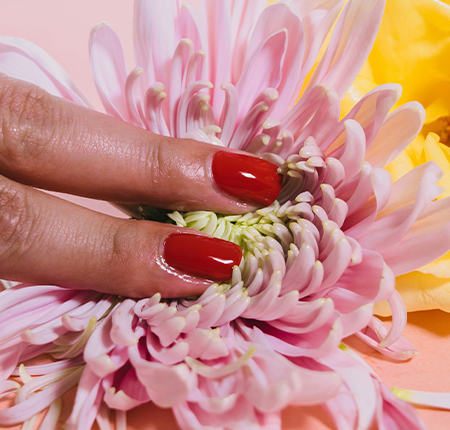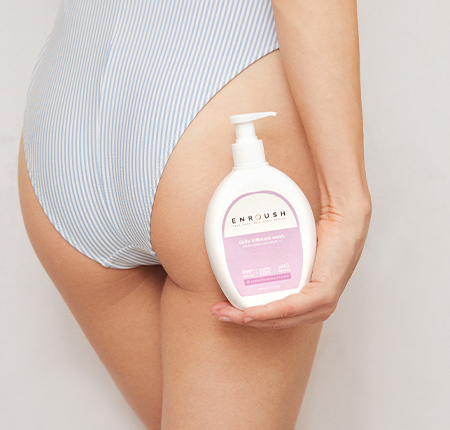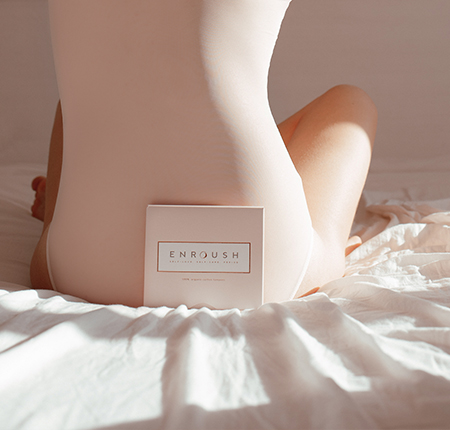
If you have noticed that pimples have appeared in your intimate area, know that you are not alone! These small red bumps are very common among women and can also appear on the vulva, labia and vaginal area. That is why it is also called vaginal acne.
We know, you might be surprised to find a pimple in the groin area, but it's not out of the ordinary. Sometimes these pimples can contain pus just like acne on the forehead or chin, and their causes can be very varied.
The question is - do you squeeze them or let them heal on their own? Do you go to the doctor or treat yourself at home? Let's talk about the causes of genital warts and how to treat them.
Why pimples appear in the intimate area - Causes
Just like pimples on the face, chest or back, genital pimples are often caused by acne. When various bacteria, oils or other toxic substances choke the pores of the skin, a pus can form even in the vulva area. It may be tender or painful to the touch.
However, besides acne, there can be many other causes for the appearance of pimples in the intimate area. Let's see what they are:
Dermatitis
Allergy to various ingredients in products that come into contact with your vulva is called contact dermatitis. Such dermatitis can cause inflammation and itching in your external genital area, swelling of the labia and vaginal area, or small red bumps in the groin area.
So if you face bumps and irritations at the level of the vulva, especially on the outside, first of all keep track of everything that touches your intimate area: underwear, care products, hygiene products. Check the ingredient list carefully. Many times, dermatitis occurs due to toxic chemicals from:
Bath products, shower gels, soaps or scented bath foams
Scented toilet paper
Conventional absorbents and tampons that may contain synthetic fibers or bleaches
Intimate wipes with harsh or irritating substances
Underwear or tight clothing made of synthetic materials
Clothes detergents
Condoms, spermicides or lubricants
Dermatitis can also occur as an allergic reaction to bacteria accumulated through sweat, urine, vaginal discharge or seminal fluid. That's why it's good to keep your vulva as dry and clean as possible.
Molluscum contagiosum
Molluscum contagiosum infection is a fairly common viral skin condition caused by the poxvirus of the same name. It can affect any area, including the groin.
It manifests as small lesions and skin-colored, white or pink bumps. Pimples can itch or hurt, redden, swell, and spread to the surrounding skin if you scratch or break them.
They can appear on the vulva following sexual contact with an infected partner, or simply following contact with the virus through infected objects or water from a contaminated swimming pool.
Hidradenitis suppurativa (HS)
Also known as "Verneuil's disease" or "Acne Inversa", hidradenitis suppurativa (HS) is a chronic autoinflammatory disease of the sweat glands. It has no clear causes and no treatment to cure it permanently, but there are solutions that can alleviate the symptoms.
Hidradenitis suppurativa manifests itself as pimple-like lesions that appear in the axilla (underarm) and inguinal area (on the vulva and genitals). Basically, the body attacks the hair follicles in the areas where you sweat, causing recurring abscesses. Pimples are painful, deep and leave scars.
Folliculitis
Hair follicles can also become infected due to bacteria or fungi, an inflammation called folliculitis. This is manifested by irritations, pimples, small bumps and blisters.
Among the most known causes of folliculitis in the intimate area are:
Allergic reactions
Like itching, redness, swelling or stinging, pimples can appear on the skin of the intimate area in case of an allergic reaction to harmful substances.
These allergies are called contact dermatitis, and as we explained above, they can be caused by any toxic ingredient that comes into contact with your vulva: fragrances in hygiene products, bleaches and synthetic fibers in menstrual care products, irritants in detergents And so on
epilation
Epilation is one of the common causes of folliculitis. If the hair twists and changes its direction of growth from the skin inward, it can cause inflammation.
Any type of pubic hair removal can irritate the skin in the groin area and cause pimples. Also, sensitive skin is more prone to irritation if you use a hard razor blade.

The difference between vaginal cysts, warts and cysts
Sometimes, you can confuse vaginal cysts with warts or cysts because of the similar appearance. But they are three different conditions, each with a different cause and different symptoms.
Vaginal cysts are small bumps that may be red and contain pus. They usually appear on the vulva or labia and are reactions caused by the blockage of skin pores with bacteria or fungi.
Genital warts are single or clustered growths that look like pimples. They appear in the genital and anal area, and are caused by the human papillomavirus. It is not a simple allergic skin reaction, but a sexually transmitted disease that requires treatment.
And vaginal cysts are swellings that can contain air, mucus or pus. They usually appear on one side of the vaginal opening, and can become painful. A doctor's visit is necessary, as drainage may be necessary for large cysts.
Treatment for vaginal cysts (in the intimate area)
Oftentimes, groin cysts go away on their own without any treatment, especially if it is a minor irritation. If not, the first step is to determine the cause with a visit to the doctor. It is recommended to consult a specialist especially when:
- Pimples do not go away or develop unfavorably
- The size of the baskets is large
- Pimples are painful
- You get genital warts frequently
- You're worried it might not be pimples
Treatment methods for vaginal cysts include:
Topical medication
Topical medication means treatment for external use. It is applied to the affected area, but not in the vagina. Depending on the cause of the pimples, the doctor may recommend:
Acne creams that will reduce the amount of sebum produced by the body and calm inflammation.
Antihistamines in the form of ointment or cream for pimples in the intimate area when the cause is an allergy or contact dermatitis.
Topical or oral antibiotics to treat pimples caused by bacterial infections.
Imiquimod cream to treat genital warts or pimples caused by molluscum contagiosum infection by inhibiting the body's immune response.
Vitamins and supplements for immunity
Molluscum contagiosum often goes away without treatment, but sometimes the doctor may prescribe oral or topical medications.
At the same time, vitamins and supplements for immunity can have an antiviral effect, favoring the efficiency of the body's immune response to this infection. Thus, the following can be recommended:
Exfoliants based on salicylic acids
If the pimples are in the groin area and are caused by acne or appear after epilation, the specialist doctor can prescribe exfoliants based on salicylic acid.
Exfoliants are only used locally, on the outer area of the vulva, to remove dead cells that clog skin pores and cause pimples. They are usually exfoliators with a gentle action that calms irritation and redness.
How to prevent pimples in the intimate area
You can take several measures to prevent the appearance of vaginal cysts, but basically they all boil down to giving your vulva as gentle and careful care as possible. It is important to properly maintain the hygiene of your intimate area and be careful about all the products and ingredients it comes into contact with.
Here's what you can do concretely:
Keep the intimate area clean
The accumulation of bacteria, sweat and moisture in the intimate area creates a favorable environment for the development of infections and the appearance of genital cysts. Your vulva needs to be clean, hydrated and dry, so use water and a natural intimate gel daily to clean it externally.
Enroush intimate gel contains 95% natural ingredients, pH neutral and fragrance-free with allergens to protect your intimate flora. It is enriched with propolis extract, Tribulus Terrestris and Neem oil that fight against infections, leaving your skin clean and soft.

Wears 100% cotton underwear
Synthetic fiber underwear keeps heat and moisture in the intimate area, so it is better to avoid it. Choose light underwear, made of natural fibers (ex: 100% cotton), which allows your skin to breathe.
Use absorbents and tampons made from natural ingredients
Conventional menstrual products can contain dioxin, chlorine, fragrances, and other toxic chemicals that aren't even listed on the label. Can you imagine the impact they have if they come into contact with your vulva and are absorbed into your body month after month during your period? They are one of the most common causes of irritation and pimples in the intimate area.
Use 100% organic cotton Enroush pads and tampons , as they do not contain any ingredients toxic to your intimate health. They are soft, comfortable and hypoallergenic to let your skin breathe and provide you with safe menstrual care without allergies and negative effects.

Also, always change tampons and pads when full, or every 4-8 hours. Thus you prevent the accumulation of bacteria and unpleasant odors.
Avoid tight clothing
As with synthetic fiber underwear, tight clothes can cause inflammation and pimples in the intimate area because they do not allow the skin to breathe and maintain a moist environment.
At the same time, fitted clothes constantly rub against the skin and can cause redness or irritation. Constantly irritated skin can become infected, so it's best to avoid such clothing.
Opt for clothes made of natural fibers, comfortable and breathable. Make sure you change them after you sweat (eg after a run or a workout).
Frequently asked questions about pimples in the private area
We have already told you the general information about the causes of pimples in the intimate area and how they can be treated. But how long do you have to wait for them to pass? Can you squeeze them, or does it have to heal on its own? Finally, we want to answer the most frequent questions about pimples and bumps in the intimate area:
When should I go to the doctor if I have pimples in the intimate area?
Normally, a pimple in the intimate area should go away on its own. If it does not pass, it is the first sign to go to the specialist doctor. You should also see a doctor if you notice genital warts repeatedly, if they are large and painful, or if they develop unfavorably.
Are pimples in the intimate area painful?
It is normal to feel a level of discomfort when you have one or more pimples in your private area. Whatever their cause, they are a form of skin irritation and like any irritation, they can be accompanied by itching, stinging, burning or even pain. But if these cysts do not go away, are large and the pain worsens, it is not normal and a medical consultation is recommended.
Is it ok to squeeze a pimple from the private area?
Avoid squeezing pimples in the intimate area, no matter how tempting it is. First, it is painful because the skin is sensitive. And secondly, the liquid removed by squeezing can reach other areas of the vulva and spread bacteria, increasing your predisposition to vaginal irritation and pimples.
How long does it take for pimples to pass from the intimate area?
Usually, pimples in the intimate area go away within a few days, up to 1-2 weeks. If they're still there after two weeks, talk to your doctor.






















